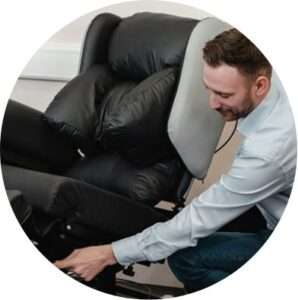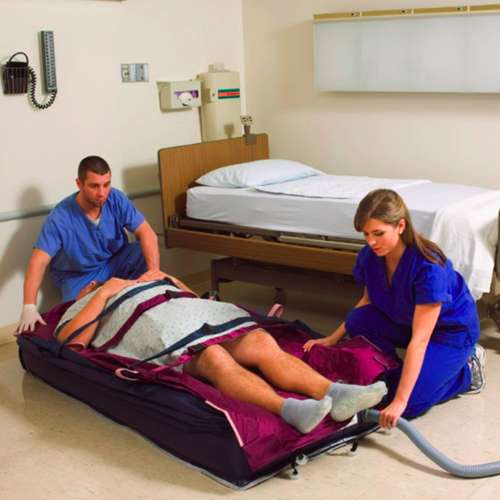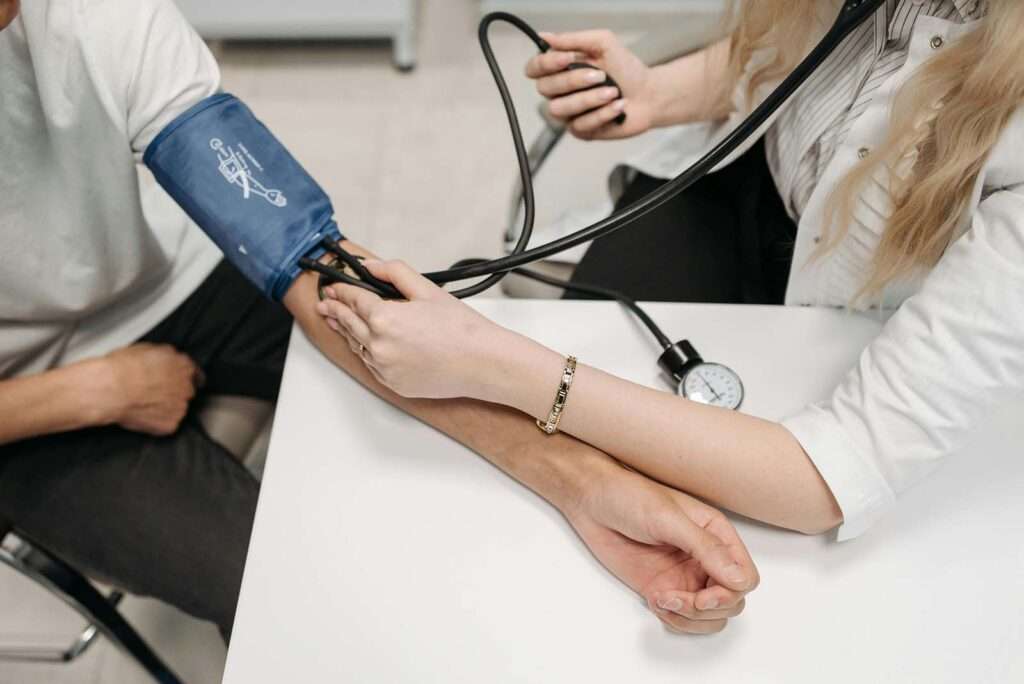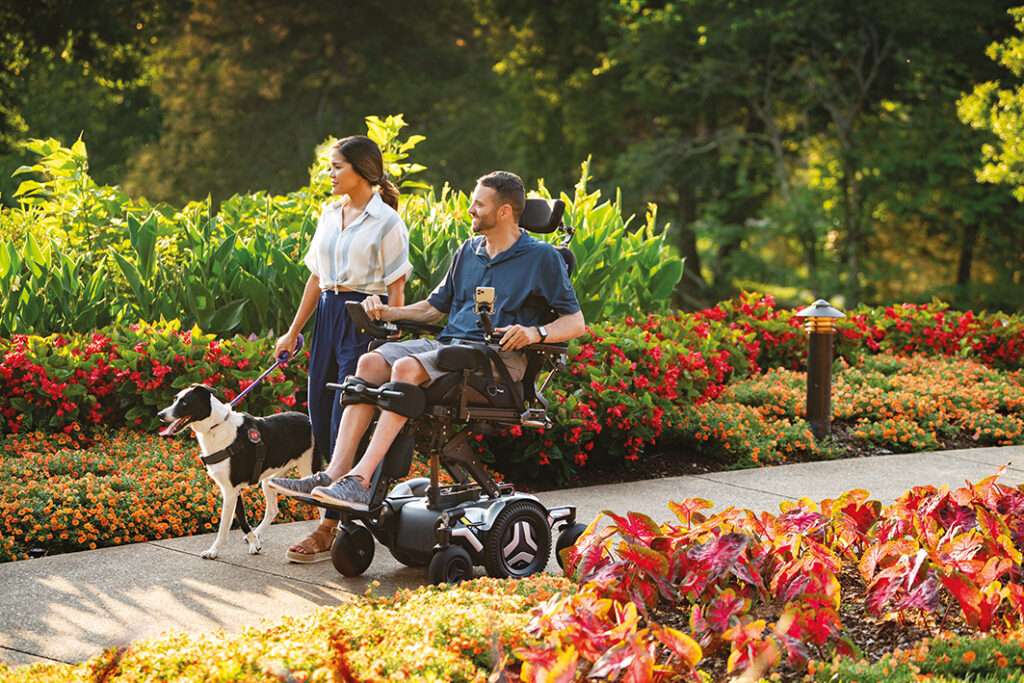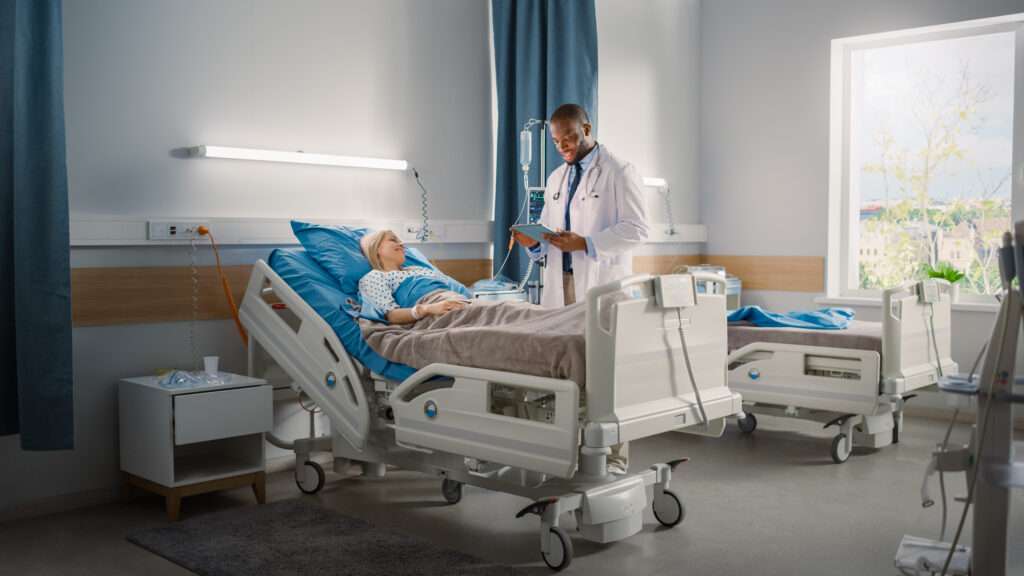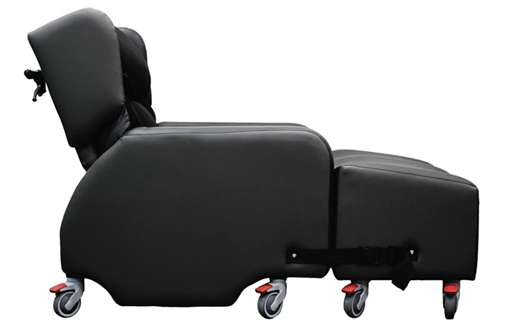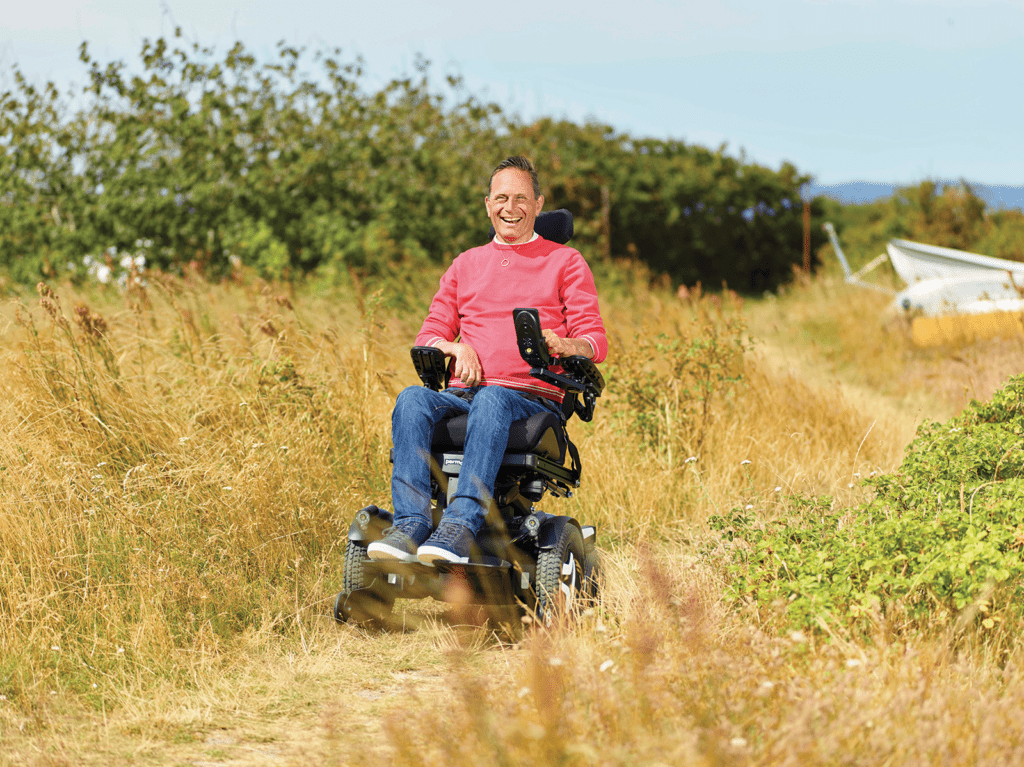Here we compare the Raizer against some well-known flat-lift products in the industry: the Mangar Supine Transfer System, the Flojac and the Hoverjack. We’ll review the key features of each product in turn before lining them up with the Raizer for the final analysis.
Jump straight to...
Mangar Supine Transfer System
How Does It Work?
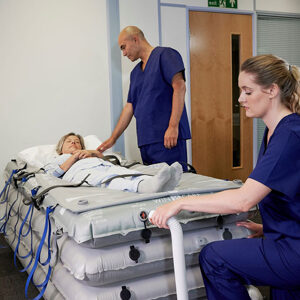
The Mangar Supine Transfer System combines the Swift Transfer Slide and the Rhino Lifting Cushion to transfer someone from the floor to a bed or stretcher whilst staying in a supine (lying) position.
The patient is transferred from the floor onto the Swift slide with manual assistance. The Swift slide is then inflated, a bit like an inflatable raft, then slides with the patient onto the Rhino lifting cushion. The Rhino inflates one section at a time to the desired height, where the patient can then transfer onto the bed/stretcher using the Swift.
What Are The Key Features?
- Max user weight 500kg
- 204cm L x 112cm W
- Packs into portable carry case at 20kg total weight
- Patient markings to achieve optimum positioning
- Durable anti-rip material
- Mains and battery powered with Airflo Duo compressor
Flojac
How Does It Work?
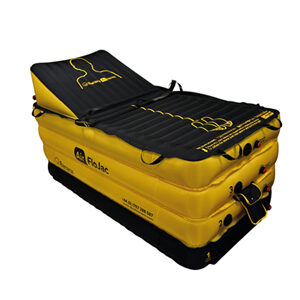
The Flojac is compatible with the Air Transfer, which works by transferring the patient onto the Air Transfer, before sliding them onto the Flojac which inflates to lift the patient upwards. When the lift reaches the desired height the patient can be transferred off the Flojac with the Air Transfer.
What Are The Key Features?
- 500kg weight limit
- 10 handles to assist transfers
- No removeable parts
- Easy wipe-clean surface for good infection control
- Inflatable wedge support to lift patient to a semi-recumbent position
Hoverjack
How Does It Work?
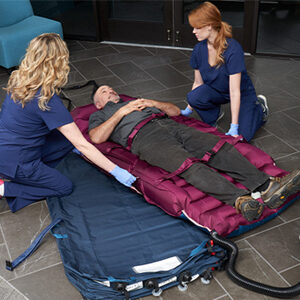
The Hoverjack works in tandem with the HoverMatt inflatable ‘raft’. Working in a similar way to the Flojac, it lifts the patient upwards with separate inflatable sections so they can be transferred laterally onto a mattress or other horizontal surface, whilst still in a supine position.
What Are The Key Features?
- Teflon-coated bottom to assist transfers
- Two different widths available
- Two airflow speeds
- Compatible with HoverMatt, both use same air supply
Raizer Lifting Chair
How Does It Work?
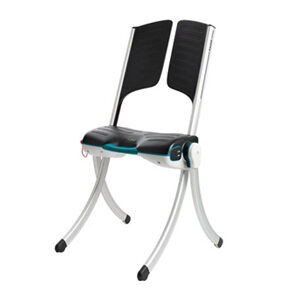
The Raizer assembles together by fitting the legs and backrest sections into the central motor unit, which is positioned under the patients legs. The Raizer lifts the patient by the motor turning the back legs in a downwards action, which cantilevers the patient upwards into a sitting position.
What Are The Key Features?
- 150kg weight limit
- Battery powered or manual versions available
- Can complete 70 lifts on full charge
- Stows into two separate carry cases for easy portability
How Do The Products Compare?
Comparison 1 — Style of Lift
First, and fairly obviously, the main distinction is that the Raizer does not perform a flat lift. The Raizer gradually lifts someone from a lying to a sitting position in under a minute.
The Rhino, Flojac and Hoverjack all lift the patient while they are in a supine position, allowing them to laterally transfer onto a bed or stretcher.
This key distinction means the Raizer is more appropriate for non-injured fallers who can be helped to stand or transfer into a chair, while the others are more suited to injured fallers who may not be able to move much and need to be transferred onto a bed or stretcher while in a lying position.
Comparison 2 — Size
The Raizer is a small and compact device that can be quickly assembled and deployed by a single user, making it ideal for confined spaces.
The Rhino, Flojac and Hoverjack are all large enough to give the patient a comfortable and secure lift while lying down and potentially injured. The Hoverjack is designed to prevent hip flexion as much as possible. However, the flipside to this is they are more cumbersome, take up more space and need more than one user to operate and transfer the patient. The size may not be as much of an issue outdoors but can obstruct corridors inside hospitals or care homes.
Comparison 3 — Manual Handling
The Raizer requires no manual handling, as it assembles around the patient and fully supports the patient as they lift. A head support can be purchased as an optional accessory that supports the back of the head. This removes strain from the carer and allows staff to use the device who are not trained in manual handling, giving more flexibility and freeing up trained care staff for other tasks.
The other products all require varying degrees of manual handling. The Rhino requires two staff to transfer the patient from either side, as does the HoverJack. The Flojac can require more than two staff and has 10 handles around the side to assist with the transfer process. This utilises more carer resource and can result in strain or patient injury if the correct manual handling techniques are not observed.
Comparison 4 — Speed and Complexity
The Raizer assembles and disassembles in a matter of seconds, and lifts to a sitting position in under a minute. Being a relatively foolproof device there is not a lot that can go ‘wrong’ with the Raizer. This makes it ideal for places with high fall volumes, or ambulance/fire services that are responding to lots of calls.
The supine lifting devices (Rhino, Flojac and Hoverjack) all require a protracted set-up. First the separate stretcher section has to be inflated, then moved onto the main unit which is inflated in separate sections. This all adds to the time and complexity of the operation and can lead to user error. The Hoverjack has no removeable parts which helps keep the product together as one complete unit.
In Summary
As mentioned earlier, the key distinction is the requirement for a flat lift if the patient is seriously injured. If uninjured, the Raizer is the perfect solution as it is foolproof to operate, swift to deploy and performs a quick, secure lift. If the patient cannot move from a lying position, the flat-lift systems help transfer the patient in a controlled, safe way, but need more space and resource to operate.



